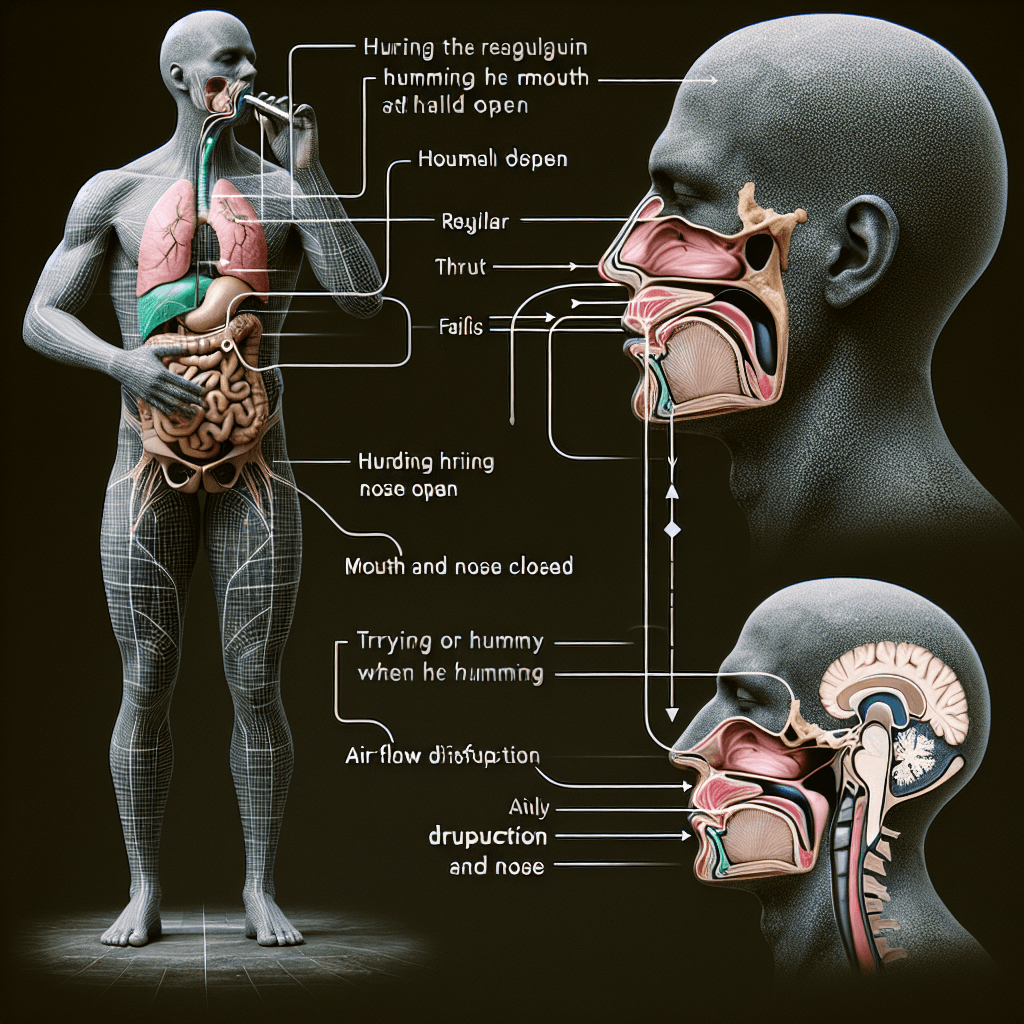The Acoustic Puzzle: Why Can't You Hum While Holding Your Nose Closed
Ever tried humming with your nose pinched closed? Discover the fascinating and simple reason why the sound instantly vanishes in this quick look at the mechanics of sound production.


Too Long; Didn't Read
You can't hum with your nose closed because humming requires air to escape through your nasal passages. Blocking your nose stops the airflow, which in turn stops the sound.
The Acoustic Puzzle: Why Can't You Hum While Holding Your Nose Closed?
Try this quick experiment: hum your favorite tune. Easy, right? Now, try humming it while gently pinching your nostrils closed. What happens? If you're like most people, the hum vanishes almost instantly, or at best, becomes a strained, very short grunt. This simple, almost party-trick-like phenomenon isn't magic; it's a fascinating glimpse into the mechanics of how we produce sound. While it might seem like a trivial question, understanding why you can't hum with your nose held shut reveals a fundamental aspect of vocalization. This blog post will dive into the science behind this curious limitation, exploring the journey of air and sound within your vocal tract.
What Exactly IS Humming?
Before we tackle why holding your nose stops a hum, let's clarify what humming is. Humming is the act of producing a sound with your mouth closed, forcing the sound to resonate through your nasal passages. Your vocal cords, also known as vocal folds, located in your larynx (or voice box), are the primary source of this sound. They vibrate as air expelled from your lungs passes through them. The pitch of the hum can be varied by changing the tension and length of these vocal cords, much like tuning a guitar string.
Key characteristics of a typical hum:
- Mouth is closed: This is a defining feature.
- Vocal cords are vibrating: This is what generates the sound.
- Sound resonates in nasal passages: This gives the hum its characteristic quality.
The Crucial Role of Airflow in Sound Production
Sound production, especially for voiced sounds like humming, is fundamentally dependent on a continuous stream of air. Think of your vocal cords as the reeds of a wind instrument. For them to vibrate and produce sound, air must flow past them.
Here’s a simplified breakdown:
- Air Supply: Your lungs provide the reservoir of air.
- Exhalation: You push air out from your lungs.
- Vibration: This exhaled air passes through the larynx, causing the tensed vocal cords to vibrate rapidly. This vibration chops the airflow into pulses of sound.
Without this continuous airflow, the vocal cords simply cannot sustain their vibration. It's like trying to make a flag flutter without any breeze; the mechanism is there, but the driving force is absent.
The Nasal Connection: Why Holding Your Nose Stops the Music
Now we get to the core of the question: why can't you hum while holding your nose closed?
When you hum, your mouth is deliberately kept shut. This means the air, after passing your vibrating vocal cords and creating the initial sound, needs an escape route. In a normal hum, that escape route is exclusively through your nasal passages and out your nostrils. Your soft palate (the fleshy part at the back of the roof of your mouth, also called the velum) is typically lowered during humming, allowing air to flow from your oral pharynx (the part of your throat behind your mouth) into your nasal cavity.
When you pinch your nostrils closed, you effectively block this one and only exit for the air.
- No Escape Route: With your mouth closed and your nasal passages blocked, the air from your lungs has nowhere to go once it passes the vocal cords.
- Pressure Build-up: Air pressure quickly builds up in the space above your vocal cords (the pharynx and nasal cavity).
- Vibration Ceases: This increased pressure equalizes or even exceeds the pressure from your lungs below the vocal cords. For your vocal cords to vibrate, there needs to be a pressure difference – higher pressure below, lower pressure above, allowing air to flow through. When this pressure difference is eliminated, the airflow stops, and consequently, your vocal cords cease to vibrate. The hum dies.
You might be able to produce a very brief, muffled sound using the air already present in your pharynx and nasal cavity before the pressure equalizes, but a sustained hum is impossible.
A Quick Comparison: Speaking vs. Humming
It's interesting to note that you can produce some speech sounds (vowels and certain consonants) for a short period with your nose held if your mouth is open, because the air can then escape through your mouth. However, many consonant sounds, particularly "m," "n," and "ng," are nasal sounds by definition. Try saying "moon" or "singing" while holding your nose – these sounds become distorted or impossible because they rely on nasal airflow. Humming is, in essence, like sustaining one of these nasal sounds.
Conclusion: The Simple Science of a Silent Hum
The reason you can't hum while holding your nose closed boils down to the fundamental physics of sound production: humming requires continuous airflow past the vocal cords, and with the mouth closed, the nasal passage is the only exit for this air. Blocking this exit halts the airflow, silences the vocal cords, and stops your hum in its tracks.
This simple experiment serves as an elegant demonstration of how our vocal system works, highlighting the crucial role of airflow and the specific pathways it takes to create the sounds we produce every day. So, the next time you find yourself idly humming, you'll have a deeper appreciation for the intricate, yet logical, processes happening within you.


